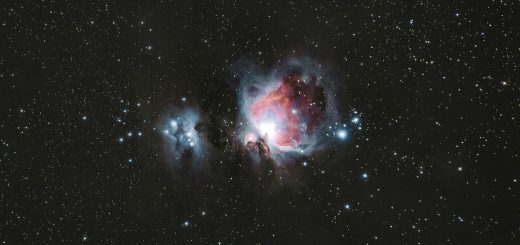How Were Werewolves Created?

Before diving in, please note: This post is for informational purposes only. If you’d like to know more about how we approach topics, feel free to check out our friendly Disclaimer Page.
Hey there, amazing readers! 🖐️ Just a quick note: yes, we know there are a lot of ads here. Trust us, we get it—it’s not the prettiest look, but they help us keep this blog alive and kicking. Those pesky little ads cover the costs of all the behind-the-scenes magic, from hosting and tech stuff to creating content we hope you’ll love.
We’re committed to delivering quality posts, and your support (even just sticking around despite the ads) means everything to us. So, bear with us, and thanks for helping us keep the good vibes rolling. Now, on to the fun stuff! 😉
TRANSLATE BUTTON AT THE END OF THE ARTICLE
A Quick Overview
Have you ever found yourself captivated by the tales of werewolves, those mythical creatures that walk the line between humanity and savagery?
The lore surrounding werewolves is as rich as it is diverse, drawing on ancient history, cultural beliefs, and human fascination with transformation.
But how did these legends come to be?
In this exploration, we will dive into the origins of werewolves, their connection to ancient cultures, and the evolution of their mythos over time.
Prepare for a delightful journey filled with interesting tidbits and perhaps a few chill-inducing moments.
How Were Werewolves Created?
The creation of werewolves is a tapestry woven from threads of myth, folklore, and human imagination.
The earliest accounts of werewolf-like beings can be traced back to ancient civilizations, where the line between myth and reality often blurred.
These stories often reflect cultural fears, the struggle with nature, and the duality of man.
The concept of shapeshifting has existed since ancient times, with many cultures believing that humans could transform into animals, particularly wolves, as a means of expressing their primal instincts.
The idea of humans possessing both a civilized side and a beastly side is a powerful narrative that resonates across cultures.
In ancient Greece and Rome, tales of men morphing into wolves were common.
The duality of human nature has long fascinated storytellers, providing fertile ground for the werewolf myth to flourish.
The blending of human traits with animalistic behavior speaks to our anxieties about losing control over our instincts.
This tension remains a central theme in werewolf stories, even in contemporary interpretations.
Folklore has a way of evolving, adapting to the fears and beliefs of successive generations.
Werewolves represent that evolution, shifting from fearsome beasts to complex characters in literature and film.
The symbolic nature of the wolf itself cannot be overlooked.
Wolves have been both feared and revered throughout history, often representing loyalty, strength, and the untamed aspects of nature.
In many cultures, wolves are seen as guides or teachers, adding an additional layer of complexity to the werewolf narrative.
This duality invites us to explore our own relationship with nature and our primal instincts.
As societies advanced, the werewolf mythos began to take on new meanings, reflecting societal changes and the human condition.
These transformations highlight our ongoing struggle with identity, morality, and the beast within.
Ultimately, the creation of werewolves can be viewed as a means of exploring complex themes that resonate with the human experience.
They embody the fears and desires we all grapple with.
This intricate web of beliefs is what makes the werewolf myth so timeless, ensuring its place in our cultural consciousness.
Werewolves are not just legends; they are mirrors reflecting our deepest fears and aspirations, showcasing the eternal battle between civility and savagery.
Ancient Cultures and Their Fascination with Wolves
The fascination with wolves is woven into the fabric of various ancient cultures.
From deities to folklore, wolves have played significant roles in shaping beliefs and practices.
In Norse mythology, the wolf is a potent symbol, with Fenrir, the monstrous wolf destined to cause chaos during Ragnarok, embodying fear and power.
The Romans revered wolves as protectors.
Their connection to the legendary tale of Romulus and Remus, the twin brothers raised by a she-wolf, underscores the importance of this animal in their culture.
In Native American traditions, the wolf is seen as a teacher and a guide, often associated with loyalty, family, and teamwork.
This duality of perception illustrates how wolves can represent both danger and wisdom.
Many cultures believed that wolves could carry messages from the spirit world, further adding to their mystique.
This belief often transformed into stories of shapeshifters—humans who could take on the form of wolves.
In Celtic mythology, werewolves were often viewed as cursed individuals.
The transformation into a wolf was sometimes seen as punishment for wrongdoing, a theme that persists in modern werewolf tales.
Ancient Mesopotamian texts refer to beings that resemble werewolves.
These creatures underscore the long-standing intrigue surrounding human-animal transformations.
Throughout history, wolves have been depicted as both companions and adversaries, demonstrating our complex relationship with nature and its wild inhabitants.
The deep-rooted symbolism of wolves can still be seen in contemporary storytelling, where they often represent the untamed aspects of humanity.
The exploration of this duality has helped shape our understanding of ourselves, prompting us to confront our fears and aspirations.
Ancient cultures have left us a legacy of stories and beliefs that continue to influence how we view wolves and werewolves today.
The Legend of Lycaon: A Greek Connection
One of the earliest and most significant accounts of werewolves can be traced back to Greek mythology through the story of Lycaon.
According to the myth, Lycaon was a king of Arcadia who doubted the divinity of Zeus. In a test of faith, he served Zeus a meal made from the flesh of a sacrificed child.
Enraged by this act, Zeus transformed Lycaon into a wolf, condemning him for his hubris and lack of respect for the gods.
This legend illustrates the consequences of defying divine authority.
Lycaon’s transformation reflects the duality of human nature, highlighting the struggle between civilization and primal instincts.
The term "lycanthropy" derives from Lycaon, solidifying his place in the werewolf narrative.
This transformation symbolizes the darker aspects of humanity, the lurking beast within us all.
The story of Lycaon speaks to the fears of ancient societies, where the unknown and the supernatural were often intertwined.
It reflects the consequences of moral failings, serving as a cautionary tale against hubris and disrespect towards the divine.
Lycaon’s tale also emphasizes the theme of transformation, a central aspect of werewolf lore that resonates throughout history.
In many ways, the legend of Lycaon serves as a prototype for later werewolf stories, reinforcing the idea that humans can be both civilized and savage.
This myth has inspired countless adaptations, showcasing the enduring power of the werewolf narrative.
Lycaon’s legacy remains a potent symbol, reminding us of the darkness that can lurk within and the consequences of our actions.
Werewolf Folklore: Tales from Around the Globe
Werewolves have transcended geographical boundaries, appearing in various forms across cultures.
In European folklore, werewolves were often depicted as men cursed to transform during the full moon, a theme that has become synonymous with the myth.
In French folklore, the "Loup-Garou" refers to a werewolf-like creature, often associated with witchcraft and dark magic.
In Scandinavian legends, the "Völva" were believed to be shapeshifters capable of transforming into wolves.
These stories often highlighted the connection between women and the supernatural.
Native American tribes also have their own versions of werewolf legends. The “Skinwalkers” are said to be witches who can transform into various animals, including wolves, often for nefarious purposes.
In African folklore, tales of werehyenas illustrate the belief in humans transforming into hyenas, sometimes reflecting deep-seated cultural fears.
In Russia, the "Werewolf" is often depicted as a cunning trickster, using its ability to shape-shift for personal gain.
Each culture’s interpretation of werewolves reflects their unique fears, values, and societal beliefs, providing insight into the human psyche.
These diverse tales often share common themes, such as transformation, loss of control, and the struggle between humanity and savagery.
The global spread of werewolf narratives demonstrates their universal appeal, as they tap into fundamental human experiences.
These stories continue to evolve, adapting to modern sensibilities while retaining their core themes, ensuring their place in our cultural heritage.
The Transformation: How Humans Became Beasts
The transformation process is central to the werewolf legend, often steeped in mystery and fear.
The most common depiction involves a transformation triggered by the full moon.
This lunar connection has become iconic in werewolf lore, evoking images of howling wolves and nights filled with terror.
Folklore often suggests that these transformations are uncontrollable, reflecting humanity’s struggle with inner desires and primal instincts.
Various methods of transformation are presented in different cultures, with some believing it occurs through a curse, while others suggest it can be learned through magic or ritual.
The physical changes during transformation are often described in graphic detail, with bones cracking and flesh stretching, illustrating the violent nature of this metamorphosis.
In many tales, the werewolf retains some human consciousness, blurring the lines between the beast and the man, leading to internal conflict and tragedy.
The transformation can also symbolize the release of repressed emotions, reflecting our own struggles with identity and societal norms.
Characters grappling with their transformations often face moral dilemmas, highlighting the consequences of giving in to one’s darker desires.
The werewolf’s dual nature serves as a metaphor for the human experience, embodying the constant battle between civility and savagery.
The transformation process often serves as a commentary on the dangers of unchecked instincts, reminding us of the thin line between order and chaos.
The allure of transformation reflects our own desires for freedom, even as we recognize the potential consequences of embracing our primal selves.
The Role of the Moon: Science or Superstition?
The connection between werewolves and the moon is one of the most enduring elements of their mythology.
The full moon is said to trigger the transformation.
This association has led to centuries of speculation and fear regarding lunar cycles.
Science has explored the impact of the moon on human behavior, with some studies suggesting that the lunar cycle can affect sleep patterns and mood.
However, concrete evidence linking the moon to werewolf transformations remains elusive.
Folklore often attributes supernatural powers to the moon, suggesting that it influences human behavior in mysterious ways.
The moon’s illumination at night creates a sense of mystery and foreboding, enhancing the allure of werewolf tales.
In many cultures, the moon is seen as a symbol of femininity, adding another layer of complexity to the werewolf narrative, particularly regarding female werewolves and shapeshifters.
This deep connection between the moon and transformation reflects humanity’s enduring fascination with celestial bodies and their perceived influence on our lives.
The lunar cycle serves as a metaphor for change and transformation, echoing the lifelong journey of self-discovery and identity.
Werewolf stories often depict characters wrestling with their transformation during the full moon, symbolizing the conflict between their dual natures.
In popular culture, the full moon has become a hallmark of werewolf narratives, solidifying its role in the mythos.
While science may not support the supernatural aspects of this connection, the metaphorical implications of the moon remain powerful in our exploration of the human experience.
Medieval Europe: Witches, Trials, and Werewolves
The medieval era witnessed a blossoming of werewolf legends, often intertwined with witchcraft and superstition.
During the witch hunts of the Middle Ages, fears of werewolves often converged with fears of witches, leading to mass hysteria and persecution.
Many believed that witches could transform into wolves, further fueling the association between werewolves and dark magic.
Accusations of lycanthropy were used as a means of scapegoating, often targeting marginalized individuals within society.
The infamous trials of the 16th and 17th centuries reveal how deeply entrenched these beliefs were in popular culture, with numerous individuals executed for alleged lycanthropy.
Werewolf folklore during this time often took on a more sinister tone, portraying werewolves as malevolent beings who preyed on innocent victims.
The fear of werewolves also reflected broader anxieties about the unknown and the supernatural, as societies sought to explain their fears through folklore.
The connection between werewolves and witch trials illustrates the dangers of mass hysteria and the consequences of societal fear.
This period marked a significant evolution in the werewolf narrative, as stories shifted from ancient reverence to fearful vilification.
The impact of medieval beliefs can still be felt today, as many contemporary werewolf tales echo these historical fears.
The blend of superstition and reality during this time left an indelible mark on how we view werewolves, shaping the legends that continue to captivate us.
The Influence of Literature on Werewolf Myths
Literature has played a crucial role in shaping and reshaping the werewolf narrative throughout history.
Early literary references to werewolves can be found in texts like Ovid’s "Metamorphoses", which helped cement the idea of transformation in the public consciousness.
The 19th century saw a revival of interest in werewolves, with stories like "The Werewolf" by Clemence Housman exploring the psychological aspects of transformation.
Classic works like Bram Stoker’s "Dracula" incorporate werewolf elements, blending different mythologies to create a more complex supernatural narrative.
Contemporary literature has continued to explore werewolves, often focusing on themes of identity, morality, and the nature of humanity.
Authors like Anne Rice and Stephen King have re-imagined the werewolf myth, adding depth and nuance to these characters.
The evolution of werewolf literature reflects societal changes, allowing us to explore our fears and desires through the lens of fiction.
Werewolves often serve as metaphors for personal struggles, highlighting the conflict between our civilized selves and our primal instincts.
The popularity of werewolf stories in literature has led to the emergence of subgenres, including urban fantasy and horror.
These narratives challenge us to confront our own inner beasts, prompting reflection on our complex human nature.
The lasting impact of literature on werewolf myths ensures their continued relevance, keeping the mythology alive and evolving.
From Folklore to Film: Werewolves in Pop Culture
The journey of werewolves from folklore to film has been a fascinating evolution, capturing the imaginations of audiences worldwide.
The first major werewolf film, "The Wolf Man," released in 1941, set the standard for future portrayals, combining horror with tragedy.
Movies have shifted the portrayal of werewolves, often emphasizing their tragic nature and internal struggles rather than solely focusing on their beastly aspects.
Modern films like "Underworld" and "Twilight" have introduced new takes on werewolf lore, blending romance, action, and fantasy elements.
Television shows like "Teen Wolf" have popularized werewolves for a new generation, exploring themes of friendship and identity.
The resurgence of werewolves in pop culture reflects broader societal interests, echoing our ongoing fascination with transformation and duality.
Werewolves in film often grapple with their identities, struggling to reconcile their human and animalistic sides.
The portrayal of werewolves has expanded to include diverse representations, showcasing a range of experiences and perspectives.
This evolution in film reflects changing attitudes towards the supernatural, allowing for a more nuanced exploration of the human condition.
Werewolves continue to serve as a vehicle for exploring personal struggles, resonating with audiences on a deeper level.
The cultural significance of werewolves in film ensures their place in our collective consciousness, captivating viewers for generations to come.
The Psychology Behind Werewolf Tales
Werewolf tales delve deep into human psychology, offering insights into our fears and desires.
The transformation symbolizes the struggle between our civilized selves and our primal instincts, inviting reflection on the duality of human nature.
Fear of the unknown often manifests in werewolf stories, as characters grapple with their transformations and the loss of control.
Werewolf narratives can evoke feelings of empathy, as we witness characters wrestling with their inner beasts, mirroring our own struggles.
The depiction of werewolves can serve as a metaphor for repression, reflecting societal expectations and the consequences of denial.
The internal conflict faced by werewolves invites us to confront our own fears, encouraging self-exploration and understanding.
The allure of werewolves lies in their complexity, embodying the multifaceted nature of humanity.
These tales remind us of the importance of balance, as we navigate our desires and responsibilities.
The psychology behind werewolf stories highlights the timeless struggle for identity, resonating with audiences throughout history.
Werewolf tales can serve as cautionary narratives, warning against the dangers of succumbing to our darker instincts.
Ultimately, werewolf mythology invites us to embrace our complexities, acknowledging both our light and dark sides.
Modern Interpretations: Werewolves Today
In today’s society, werewolves have taken on new forms and meanings, reflecting contemporary issues and beliefs.
Modern werewolf stories often explore themes of acceptance and identity, resonating with audiences grappling with their own struggles.
Contemporary portrayals have diversified beyond traditional tropes, showcasing a broader range of experiences and perspectives.
The rise of urban fantasy has given way to fresh takes on werewolf lore, blending elements of romance, horror, and adventure.
Werewolves are often depicted as symbols of empowerment, representing the freedom to embrace one’s true self.
The exploration of werewolves in media encourages discussions about mental health, shedding light on the complexities of identity and acceptance.
Contemporary interpretations often challenge stereotypes, presenting werewolves as multifaceted characters with depth and nuance.
The enduring popularity of werewolves in popular culture reflects our ongoing fascination with transformation, as we navigate our own journeys of self-discovery.
Modern werewolf narratives invite reflection on societal norms, encouraging audiences to question traditional expectations.
These tales serve as a reminder of the importance of embracing our complexities, celebrating both our light and dark aspects.
The evolution of werewolves in modern storytelling ensures their continued relevance, captivating new generations with their timeless appeal.
Celebrating the Legacy: Werewolves in Our Lives
Werewolves have become an enduring part of our cultural landscape, encompassing a range of themes and emotions.
The legacy of werewolves serves as a reminder of our shared human experience, reflecting our fears and desires throughout history.
Werewolves symbolize the struggle for identity, inviting us to confront our own complexities in an ever-changing world.
The enduring fascination with werewolves showcases the power of storytelling, as we explore the depths of our own humanity.
From folklore to film, werewolves have left an indelible mark on culture, shaping our understanding of transformation and duality.
The exploration of werewolves in literature and media invites empathy, allowing us to connect with characters facing their own struggles.
Werewolves serve as a metaphor for the human condition, reminding us of the importance of embracing our complexities.
The celebration of werewolves in our lives reflects our ongoing desire for connection, as we navigate our own journeys of self-discovery.
As we continue to explore werewolf narratives, we uncover deeper truths about ourselves, enriching our understanding of the human experience.
The legacy of werewolves challenges us to confront our fears, inspiring courage and resilience in the face of adversity.
Ultimately, werewolves represent our shared journey, reminding us that we all grapple with our own beasts within.
Conclusion
The story of werewolves is a mesmerizing tapestry of myth, culture, and psychology.
From their ancient origins to their modern interpretations, werewolves continue to captivate our imaginations.
They serve as reminders of our dual nature and the complexities of the human experience.
Whether viewed through the lens of folklore, literature, or film, these legendary creatures encourage us to confront our fears, embrace our identities, and celebrate the myriad aspects of humanity.
So next time you hear a wolf howl at the moon, remember the powerful legacy of werewolves and the lessons they impart about the nature of humanity.

The Enlightenment Journey is a remarkable collection of writings authored by a distinguished group of experts in the fields of spirituality, new age, and esoteric knowledge.
This anthology features a diverse assembly of well-experienced authors who bring their profound insights and credible perspectives to the forefront.
Each contributor possesses a wealth of knowledge and wisdom, making them authorities in their respective domains.
Together, they offer readers a transformative journey into the realms of spiritual growth, self-discovery, and esoteric enlightenment.
The Enlightenment Journey is a testament to the collective expertise of these luminaries, providing readers with a rich tapestry of ideas and information to illuminate their spiritual path.
Our Diverse Expertise 🌟
While our primary focus is on spirituality and esotericism, we are equally passionate about exploring a wide range of other topics and niches 🌍📚. Our experienced team is dedicated to delivering high-quality, informative content across various subjects ✨.
To ensure we provide the most accurate and valuable insights, we collaborate with trusted experts in their respective domains 🧑🏫👩🏫. This allows us to offer well-rounded perspectives and knowledge to our readers.
Our blog originally focused on spirituality and metaphysics, but we’ve since expanded to cover a wide range of niches. Don’t worry—we continue to publish a lot of articles on spirituality! Frequently visit our blog to explore our diverse content and stay tuned for more insightful reads.





